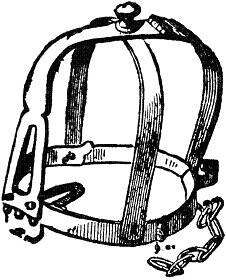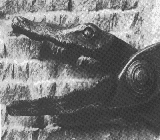JasonSJackson
Jah Sun Ma'at Ra
drawing and quartering

as described by the so called "greatest jurist of the Elizabethan and Jacobean eras", Edward Coke:
"After a traitor has had his just trial, and is convicted ... he shall have his judgment: to be drawn to the place of execution from his prison, as being not worthy anymore to tread upon the face of earth whereof he was made. Also, for that he has been retrograde to nature, therefore is he drawn backward ....
"And whereas God has made the head of man the highest and most supreme part, as being his chief grace and ornament, he must be drawn with his head declining downward and lying so near the ground as may be, being thought unfit to take benefit of the common air.
"For which cause also he shall be strangled, being hanged up by the neck between heaven and earth as deemed unworthy of both or either, as likewise, that the eyes of men may behold and their hearts condemn him.
"Then he is to be cut down alive, and to have his privy parts cut off and burnt before his face as being unworthily begotten and unfit to lead any generation after him. His bowels ... taken out and burnt, who inwardly had conceived and harboured such horrible treason.
"After, to have his head cut off, which had imagined the mischief.
"And lastly, his body to be quartered and the quarters set up in some high and eminent place, to the view and detestation of men, and to become prey for the fowls of the air.
"And this is a reward due to traitors whose heart be hardened. For it is a psychic of state and government to let out our corrupt blood from the heart."
drawing and quartering, part of the grisly penalty anciently ordained in England (1283) for the crime of treason. Until 1867, when it was abolished, the full punishment for a traitor could include several steps. First he was drawn, that is, tied to a horse and dragged to the gallows. A so-called hurdle, or sledge, is sometimes mentioned in this context. Although such a device may have been a means of mercy, The History of English Law Before the Time of Edward I (2nd ed., 1898; reissued 1996) states that it was more likely a way to deliver a live body to the hangman. The remainder of the punishment might include hanging (usually not to the death), usually live disemboweling, burning of the entrails, beheading, and quartering. This last step was sometimes accomplished by tying each of the four limbs to a different horse and spurring them in different directions.

as described by the so called "greatest jurist of the Elizabethan and Jacobean eras", Edward Coke:
"After a traitor has had his just trial, and is convicted ... he shall have his judgment: to be drawn to the place of execution from his prison, as being not worthy anymore to tread upon the face of earth whereof he was made. Also, for that he has been retrograde to nature, therefore is he drawn backward ....
"And whereas God has made the head of man the highest and most supreme part, as being his chief grace and ornament, he must be drawn with his head declining downward and lying so near the ground as may be, being thought unfit to take benefit of the common air.
"For which cause also he shall be strangled, being hanged up by the neck between heaven and earth as deemed unworthy of both or either, as likewise, that the eyes of men may behold and their hearts condemn him.
"Then he is to be cut down alive, and to have his privy parts cut off and burnt before his face as being unworthily begotten and unfit to lead any generation after him. His bowels ... taken out and burnt, who inwardly had conceived and harboured such horrible treason.
"After, to have his head cut off, which had imagined the mischief.
"And lastly, his body to be quartered and the quarters set up in some high and eminent place, to the view and detestation of men, and to become prey for the fowls of the air.
"And this is a reward due to traitors whose heart be hardened. For it is a psychic of state and government to let out our corrupt blood from the heart."
drawing and quartering, part of the grisly penalty anciently ordained in England (1283) for the crime of treason. Until 1867, when it was abolished, the full punishment for a traitor could include several steps. First he was drawn, that is, tied to a horse and dragged to the gallows. A so-called hurdle, or sledge, is sometimes mentioned in this context. Although such a device may have been a means of mercy, The History of English Law Before the Time of Edward I (2nd ed., 1898; reissued 1996) states that it was more likely a way to deliver a live body to the hangman. The remainder of the punishment might include hanging (usually not to the death), usually live disemboweling, burning of the entrails, beheading, and quartering. This last step was sometimes accomplished by tying each of the four limbs to a different horse and spurring them in different directions.





